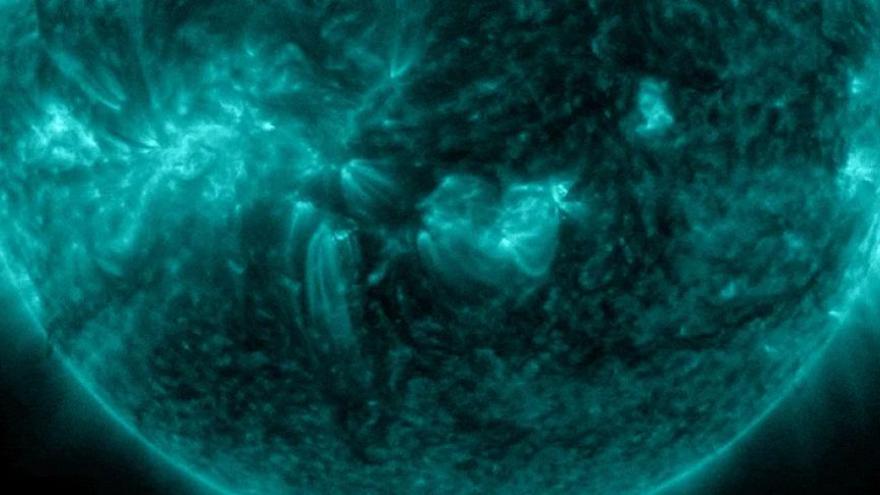In a world increasingly aware of environmental challenges, the 33rd annual State of the Climate report stands as an unequivocal warning about the severity of the climate crisis. During 2022, the planet has reached alarming and, in many cases, alarming stages in terms of climate conditions. Science warns Now this report, prepared by 570 scientists from the National Centers for Environmental Information (NCEI) in 60 countries, provides a comprehensive assessment of the latest climate changes, and its findings are alarming: concentrations of greenhouse gases, sea level rise, and climate change. Global temperature will reach unprecedented levels in 2022.
According to the study, greenhouse gas concentrations on Earth have reached their highest point ever, with increasing… 50% in carbon dioxide levels Compared to the pre-industrial era (1850-1900).
In addition, concentrations of other gases, such as methane in the atmosphere, also witnessed an unprecedented rise, registering a 165% increase compared to the same period.
When it comes to global warming, trends have continued around the world, raising the annual temperature of the Earth’s surface by a range of 0.45 to 0.54 degrees Fahrenheit. (equivalent to 0.25 to 0.30°C). These data place the year 2022 among the six hottest years since measurements began in the second half of the nineteenth century.
Derek Arndt, Director General of the NCEI, commented on these findings, noting that they reflect increasingly extreme and variable conditions in a warming world.
Record in the seas and oceans
Globally, mean sea level set a remarkable record by rising for the eleventh consecutive year, reaching nearly 101.2 mm (4 in) above the average recorded in 1993, when satellite measurements began.
With regard to the average annual sea surface temperature for the year 2022, it equaled what was recorded in 2018, ranking sixth on record. but, This number remained lower than the values of 2019 and 2020This is partly due to the prolonged influence of the climate phenomenon known as La Niña, which is characterized by cooler temperatures and abnormal cooling of water at the equator of the tropical Pacific Ocean.
Heat waves also reached “unprecedented” levels so far, affecting Western Europe for 14 days and reaching 104 degrees Fahrenheit (40°C) at weather stations in places like England, a historic event.
These changes caused increased melting of glaciers. An example cited in the report is the Alps in Switzerland, which will lose more than 6% of their size in 2022. In addition, heat and drought have particularly affected the Yangtze River Basin in China, affecting more than 38 million people and causing economic impacts. Negative. Impact of $4.75 billion.
A record year for Argentina
The report divides the continent into different regions, and in the case of Argentina, which is located in the southern cone along with Chile and Uruguay, the following data stands out: While Chili pepper Its tenth coldest year since 1961, with an anomaly of -0.24 °C below normal, Uruguay had its second coldest year since 1991, with an anomaly of -0.5 °C below normal, and the national mean temperature in Argentina was +0.2 degrees Celsius, marking the 20th warmest year since national records began in 1961.
The report indicates that in Rivadavia Basalta, the highest temperature was recorded in the city since 1961, and this value was also the highest for the region and the country during 2022. In addition, Argentina recorded its second warmest summer since 1961During autumn, below-average temperatures were observed in most parts of the region, while above-average temperatures were recorded in parts of northern, central and southern Argentina and Chile. A cold outbreak on May 31 set new historic minimum temperature records for the region.
The winter featured near-average or above-average temperatures across Argentina, while Uruguay and most of Chile experienced below-average temperatures. Cold blasts affected central Argentina and southern Patagonia, while a mass of warm air affected northern Argentina, setting new records for minimum and maximum temperatures in July.
In spring, temperatures were below average across most of Uruguay, Chile and northern Argentina, while above average temperatures were observed south of 33°S. An early heat wave in November affected the southern half of Argentina, with higher temperatures (>30.0°C) in the south of the country. Several locations set new daily and monthly records for maximum temperatures.
In 2022, drought in the region was mainly due to lack of rainfall. Most of the region experienced below-average annual precipitation levels, with the areas most affected by drought being Uruguay, Chile, northwestern Patagonia and north-central Argentina.






